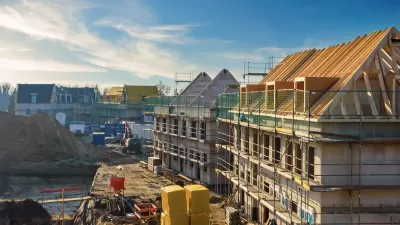Pete Saunders compares the disparate experiences of two Chicago suburbs, Naperville and Joliet, who took different approaches to legacy.
"There is a totally undervalued consideration when looking at the past, present and future of cities. We can't discount the importance of legacy -- the quality of past decisions, what's been given to us, and what we do with it," writes Saunders. When comparing Naperville and Joliet, Saunders finds that "[one] city thought it lacked a legacy, until it found one that enabled it to take its growth to the next level; the other allowed much of its legacy to fritter away and its residents chose to flee from it."
Starting from 1950, when Joliet was a small industrial city of 52,000 people and Naperville was a small farming community of 7,000, "only Naperville was able to grow, using the suburban development growth model." Why? "Because Naperville was unburdened with legacy. Naperville was surrounded by farmlands that were suitable for new single family home construction. The extension of the interstate highway network allowed Naperville to make highway access an attractive amenity to potential residents, and allowed the development of office complexes on the city's northern fringes."
"Naperville hit the suburban trifecta -- greenfields for residential development, highways and commter [sic] rail access to move people, and office parks to employ workers."
The policies of the two cities shifted in the 1990s, producing a legacy of land use decisions that are still influencing the growth of each cities today.
FULL STORY: Tale of Two Suburbs: Legacy, And What We Do With It

Planetizen Federal Action Tracker
A weekly monitor of how Trump’s orders and actions are impacting planners and planning in America.

Restaurant Patios Were a Pandemic Win — Why Were They so Hard to Keep?
Social distancing requirements and changes in travel patterns prompted cities to pilot new uses for street and sidewalk space. Then it got complicated.

Map: Where Senate Republicans Want to Sell Your Public Lands
For public land advocates, the Senate Republicans’ proposal to sell millions of acres of public land in the West is “the biggest fight of their careers.”

Maui's Vacation Rental Debate Turns Ugly
Verbal attacks, misinformation campaigns and fistfights plague a high-stakes debate to convert thousands of vacation rentals into long-term housing.

San Francisco Suspends Traffic Calming Amidst Record Deaths
Citing “a challenging fiscal landscape,” the city will cease the program on the heels of 42 traffic deaths, including 24 pedestrians.

California Homeless Arrests, Citations Spike After Ruling
An investigation reveals that anti-homeless actions increased up to 500% after Grants Pass v. Johnson — even in cities claiming no policy change.
Urban Design for Planners 1: Software Tools
This six-course series explores essential urban design concepts using open source software and equips planners with the tools they need to participate fully in the urban design process.
Planning for Universal Design
Learn the tools for implementing Universal Design in planning regulations.
Heyer Gruel & Associates PA
JM Goldson LLC
Custer County Colorado
City of Camden Redevelopment Agency
City of Astoria
Transportation Research & Education Center (TREC) at Portland State University
Camden Redevelopment Agency
City of Claremont
Municipality of Princeton (NJ)





























